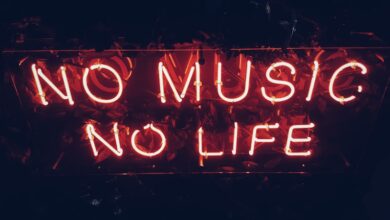Understanding the Role of Music in Cultural Identity and Heritage


Introduction:
What is it about music that makes it an integral part of our cultural identity and heritage? How does a simple melody or rhythm connect us to our roots and shape our sense of belonging? In this article, we will explore the profound role of music in shaping and preserving cultural identity. From ancient traditions to modern expressions, music has the ability to transcend language barriers and evoke emotions that resonate with the essence of different cultures.
The Multifaceted Language of Music:
Music serves as a universal language that transcends spoken words. It possesses the remarkable capacity to convey emotions, stories, and historical narratives without the need for translation. Just like language, music evolves, adapts, and carries within its notes the tales of a community’s past. Whether it’s the spirited beats of African drums, the haunting melodies of Irish fiddles, or the rhythmic harmonies of Latin American salsa, each musical tradition tells a unique story and connects generations across time.
Preserving Cultural Heritage:
Music acts as a guardian of cultural heritage, preserving traditions and rituals that have been passed down through generations. Through songs and chants, cultural values, customs, and beliefs are upheld and transmitted from one generation to another. These musical expressions offer glimpses into the history, struggles, and triumphs of a community, fostering a sense of pride and continuity amidst a rapidly changing world.
A Catalyst for Unity and Diversity:
Music brings people together, breaking down barriers and fostering unity. It serves as a powerful tool for promoting cross-cultural understanding and appreciation. When diverse musical styles blend and intertwine, new genres and collaborations emerge, celebrating the beauty of diversity. Music has the ability to bridge gaps between cultures, fostering respect, empathy, and mutual admiration.
Soundtrack of Memories and Emotions:
Have you ever heard a song that instantly transported you back in time, triggering memories and emotions? Music has a unique ability to evoke nostalgia, capturing the essence of particular moments in our lives. It becomes intertwined with our personal narratives and collective experiences, acting as a soundtrack that accompanies us throughout our journey.
Conclusion:
As we delve into the diverse tapestry of cultural identity and heritage, music emerges as a central thread that weaves communities together. Its universal language resonates deeply within us, reminding us of who we are and where we come from. Through its melodies, rhythms, and harmonies, music preserves traditions, fosters unity, and evokes powerful emotions. So let us celebrate and embrace the captivating role of music in shaping our cultural identity and heritage.
Harmony of Heritage: How Music Preserves and Shapes Cultural Identity
In a world filled with diverse cultures, music stands as an extraordinary medium that both preserves and shapes our cultural identity. It transcends boundaries, languages, and time, resonating deep within our being. From ancient chants to modern symphonies, music holds the power to evoke emotions, ignite memories, and connect people across generations.
When we delve into the rich tapestry of global music traditions, we discover a profound link between music and cultural heritage. Each culture has its unique musical expressions, reflecting its history, values, and beliefs. Whether it’s the rhythmic beats of African drums, the soul-stirring melodies of Indian ragas, or the foot-tapping tunes of Latin America, music encapsulates the essence of a society.
Music serves as a vessel of oral tradition, carrying stories and narratives from generation to generation. Through songs, ballads, and folktales, communities pass down their collective wisdom, legends, and historical events. This transmission of knowledge not only fosters a sense of belonging but also ensures the preservation of cultural heritage for future generations.

Furthermore, music plays a pivotal role in shaping cultural identity. It acts as a mirror, reflecting the aspirations, struggles, and triumphs of a community. When musicians infuse their compositions with elements unique to their culture, they create a sonic signature that distinguishes them from others. Just as a language defines a group of people, the music they create becomes a powerful marker of their identity, uniting individuals under a shared heritage.
Moreover, music has the exceptional ability to transcend language barriers. While lyrics may vary, the universal language of melody and rhythm enables people from different backgrounds to connect on a profound level. It has the power to foster empathy and understanding, bridging gaps between cultures and fostering harmonious relationships.
Music is an invaluable asset in preserving and shaping cultural identity. It acts as a vessel that carries the stories, traditions, and values of a community throughout generations. Through its melodic language, music transcends barriers, fosters unity, and strengthens the bonds between individuals. As we celebrate the harmony of heritage, let us embrace the melodies that echo our past, present, and future, for they hold the key to preserving our collective cultural tapestry.
Unlocking the Melodies of the Past: Exploring Music’s Influence on Cultural Heritage
Have you ever wondered how music can transcend time and connect us with the rich tapestry of our cultural heritage? Just like a key that unlocks hidden treasures, music has the power to transport us to different eras, evoking emotions and providing glimpses into the past. In this article, we will delve into the captivating realm where music and cultural heritage intertwine, unearthing the profound influence melodies have on shaping and preserving our collective identity.
Music, in its myriad forms, serves as an auditory time machine, carrying the stories, traditions, and values of generations before us. From ancient folk songs echoing through the valleys to classical compositions reverberating in grand concert halls, each melody carries a unique narrative that resonates with the soul. These musical expressions act as vessels, passing down the essence of cultures across centuries.
Imagine standing amidst the ruins of an ancient civilization, surrounded by remnants of a forgotten era. As you close your eyes, the haunting strains of an indigenous flute reach your ears, instantly transporting you back in time. You can almost feel the heartbeat of the people who once inhabited those very grounds, their struggles and triumphs woven into the notes that fill the air. Music possesses the remarkable ability to bridge the gap between the present and the past, breathing life into historical artifacts and reviving long-lost traditions.
Beyond preserving cultural heritage, music also plays a pivotal role in fostering a sense of belonging and unity within communities. It acts as a universal language, transcending barriers of language and geography. Regardless of our background or upbringing, we can all find solace and kinship in the harmonies that resonate within us. The rhythms and melodies that define our cultural heritage offer a glimpse into the diverse mosaic of humanity, reminding us of our shared humanity and interconnectedness.
Music is a powerful force that unlocks the melodies of the past, enabling us to delve into the rich tapestry of our cultural heritage. It serves as a bridge between generations, carrying the stories and traditions of our ancestors while simultaneously fostering a sense of belonging in the present. Let us embrace the harmonies that shape our identities and celebrate the profound influence music has on preserving and honoring our collective human experience.
Resonating Traditions: Discovering the Power of Music in Cultural Identity
Imagine a world without music. It would be like a colorless painting, lacking the vibrancy and depth that melodies bring to our lives. Music has an incredible ability to transcend barriers and connect people on a level that words alone cannot achieve. In the realm of cultural identity, music serves as a powerful medium that resonates with the roots of a community, carrying generations of traditions and stories.
When we delve into the tapestry of different cultures, we find that music is intricately woven into their very fabric. It is more than just entertainment or a pleasant sound; it is the heartbeat of a community, pulsating with history and emotion. Through its unique rhythms, melodies, and instruments, music breathes life into cultural experiences, preserving and transmitting heritage from one generation to another.


One remarkable aspect of music’s influence on cultural identity is its ability to evoke emotions and memories. Just a few seconds of a familiar melody can transport us back in time, conjuring images of joyous celebrations, solemn rituals, or moments of deep introspection. The shared experience of music unites individuals, creating a sense of belonging and reinforcing collective values and beliefs.
In many cultures, music is also deeply intertwined with storytelling. Traditional songs serve as vessels for oral history, passing down legends and tales that define a community’s narrative. They encapsulate the struggles, triumphs, and wisdom of ancestors, providing a link between past, present, and future. Like a key unlocking the doors to our cultural heritage, music opens our hearts and minds to the values and traditions that shape who we are.
Furthermore, the power of music goes beyond borders. It transcends language barriers, enabling communication among diverse groups of people. Even if we don’t understand the lyrics, the universal language of music speaks to our souls, fostering understanding and empathy. Whether it’s a lively African drumbeat, a haunting Indian raga, or a soul-stirring Celtic ballad, music has the ability to touch hearts and forge connections between individuals from different backgrounds.

Music is an invaluable treasure that enriches our cultural identity. It is a testament to the human spirit’s creativity, resilience, and capacity for expression. From generation to generation, it carries the weight of traditions, memories, and emotions. Whether we play an instrument, sing in harmony, or simply listen with open hearts, we become part of a larger tapestry woven by melodies, harmonies, and rhythms—a tapestry that unites us all in the universal language of music.
Rhythm of Diversity: How Music Bridges Cultures and Celebrates Heritage
In a world where diversity is celebrated, music stands as a universal language that transcends cultural boundaries. It has an incredible ability to bridge gaps between different communities and celebrate the rich heritage they hold. From ancient rituals to modern collaborations, music serves as a powerful tool for connection and understanding.
Music is ingrained in the fabric of every culture, reflecting the beliefs, values, and traditions of a community. Whether it’s the haunting melodies of classical Indian ragas or the pulsating beats of African drumming, each musical expression carries its own unique story. These rhythms and melodies serve as a vessel through which heritage is not only preserved but also shared with the world.
One of the remarkable aspects of music is its ability to evoke emotions and create a sense of belonging. When people hear familiar tunes or rhythms from their culture, it ignites a deep-seated connection to their roots, fostering a strong sense of identity. At the same time, exposure to different musical styles cultivates empathy and appreciation for other cultures, leading to a harmonious coexistence.
Music has historically played a vital role in cultural exchange, facilitating dialogue and fostering mutual respect. Artists from diverse backgrounds have come together to create masterpieces that blend various genres and traditions. These collaborations act as a metaphorical bridge, uniting people from different walks of life, breaking down barriers, and showcasing the beauty of shared experiences.
Moreover, music has the power to preserve endangered traditions and revitalize fading cultural practices. Through the transmission of traditional songs and dances, younger generations can gain a deeper understanding of their heritage. By keeping these traditions alive, music ensures that cultural legacies are not forgotten, and ancestral wisdom continues to resonate.
As we navigate an increasingly interconnected world, it is essential to recognize and embrace the rhythm of diversity that music brings. By celebrating our differences through harmonious melodies, we can create a global community where cultural appreciation and understanding thrive. So, let us come together, listen to the music that unites us, and dance to the beats that celebrate our shared humanity.




